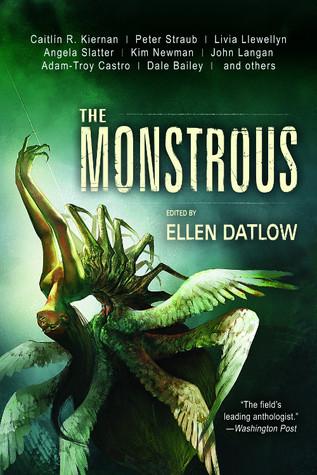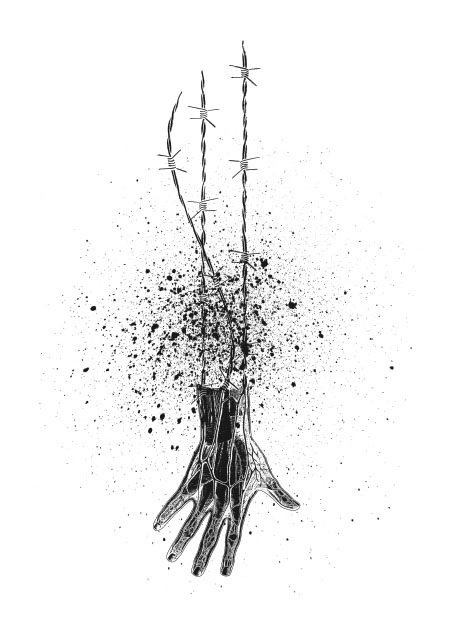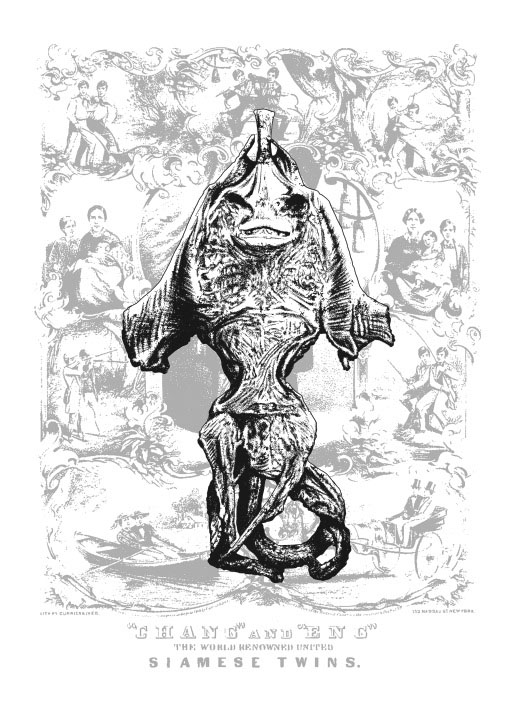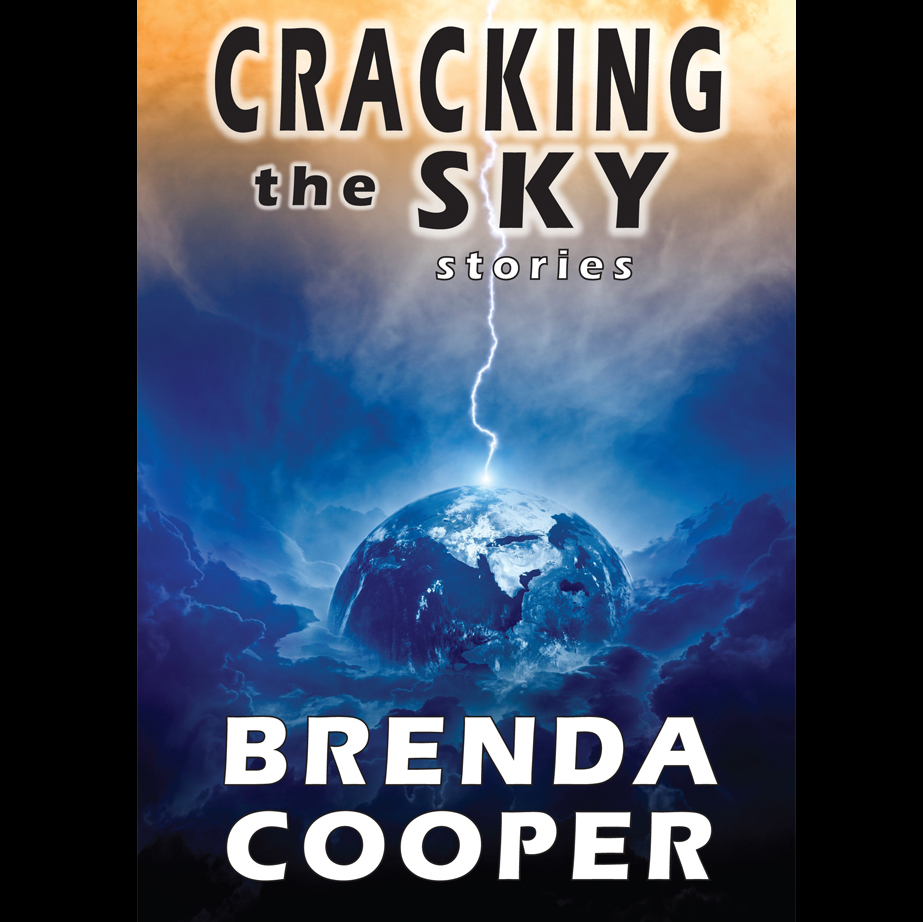 In The Monstrous (Tachyon Publications), the latest anthology in which she holds the editorial reins, Ellen Datlow presents us with yet another utterly compelling cornucopia of horrors. In this case, tackling the theme of monsters and the various interpretations thereof. In her fascinating introduction, Ms. Datlow gives us the entomology of the word “monster”; originally it had benign interpretation meaning “to warn or instruct.” Arguably within the following pages we are indeed being warned or instructed, but not in any benign way whatsoever. If you require any warning up front, I would say this: don’t read these tales if you usually like to sleep with the light off (you may find your electricity bill increasing and you may possibly enjoy a touch of insomnia, to boot).
In The Monstrous (Tachyon Publications), the latest anthology in which she holds the editorial reins, Ellen Datlow presents us with yet another utterly compelling cornucopia of horrors. In this case, tackling the theme of monsters and the various interpretations thereof. In her fascinating introduction, Ms. Datlow gives us the entomology of the word “monster”; originally it had benign interpretation meaning “to warn or instruct.” Arguably within the following pages we are indeed being warned or instructed, but not in any benign way whatsoever. If you require any warning up front, I would say this: don’t read these tales if you usually like to sleep with the light off (you may find your electricity bill increasing and you may possibly enjoy a touch of insomnia, to boot).
Kicking off is Jeffrey Ford’s chilling, otherworldly tale, A Natural History of Autumn. Set in modern-day Japan, it involves a road trip which turns extremely nasty. A contemporary cautionary fable about trust and double-dealing, it has a fairytale quality and a bone-chilling finale.
Who would murder a swan and then nail it by its neck to a tree? That’s the central image of Caitlin R. Kiernan’s The Beginning of the Year Without Summer. A professor and a young woman from the small town to which she has moved chat by the side of a lake and hidden layers of monstrosity unfold. Southern gothic at its best.
In A Wish from a Bone by Gemma Files sees a team of archaeologists in a war zone. They encounter more than they bargained for in the form of Sumerian evil spirits and the Liber Carne (Book of Meat). If you like console games like “Tomb Raider,” you will certainly enjoy this story.
Peter Straub’s take on the Grimms’ mother’s ghost story, Asphuttle sees an overweight kindergarten teacher reflecting about our inner and outer personas, what we mean and don’t mean in communicating with others, and how the inner darkness overrides all. The story snaps its jaws tight from the very first paragraph: “People think that teaching little children has something to do with helping other people, something to do with service. People think that if you teach little children, you must love them. People get what they need from thoughts like this.”
Burns, the reluctant miner in Dale Bailey’s excellent Giants in the Earth, resists anything vaguely religious. But what he and his co-workers find in the bowels of the mine force him to question all of his convictions. There is a deeply melancholy aspect to the narrative, and it reflects sadly on human nature, in a similar way that JG Ballard did in his classic short story, “The Drowned Giant.”
If I were to blurb Adam-Troy Castro’s grotesquely entertaining, The Totals, I’d say it would be something like “Lovecraftian monsters reinterpreted by cartoonist Gahan Wilson, via Arthur Miller’s ‘Death of a Salesman.'” Great fun.
Kim Newman draws on his expertise as a film and TV pundit to produce The Chill Clutch of the Unseen. The location is the place where monsters come to meet their end. In this case, the last invisible man. Although as you might imagine, events may not unfold in quite the way the protagonist hopes. Endless inventiveness and mordant wit are some of Mr. Newman’s trademarks, and they are abundant here. (Sidebar: I interviewed the author not so long ago for AISFP.)
 Down Among the Dead Men by Jack Dann and Gardner Dozois contrasts real life with fictional horror. A POW in a Nazi concentration camp discovers a vampire operating among his fellow prisoners. The moral ambiguity of the story emerges from the question about what any of us might do in order to survive. Powerful stuff.
Down Among the Dead Men by Jack Dann and Gardner Dozois contrasts real life with fictional horror. A POW in a Nazi concentration camp discovers a vampire operating among his fellow prisoners. The moral ambiguity of the story emerges from the question about what any of us might do in order to survive. Powerful stuff.
In Catching Flies by Carol Johnson, a girl and her baby brother are removed from their home after their mother dies. The story, brilliantly-written in the voice of the teenage girl, takes us into the heart and mind of a disturbing world that often works so effectively in horror films. I can’t recall who coined the phrase “the drama of childhood,” but that drama is enacted here to great effect.
Grindstone by Stephen Graham Jones sees wild west badman Derle dying from bullet wounds and still on the run. What he finds at the end of his earthly journey is to leave a horrific legacy – potentially for generations to come. It’s a brave writer who creates a protagonist who practices bestiality, albeit with a goal that goes way beyond the act, but the writer pulls it off. Grindstone is grim, gruesome, graphic and grotesque in equal measure. It also happens to be beautifully written, and I loved it.
Having read Adam L.G. Neville’s wonderfully creepy novel, Banquet for the Damned, I was looking forward to his story, Doll Hands. I wasn’t disappointed. Set in a post-apocalyptic Belgium, a peculiar staff member in a rich person’s apartment block, sets out to right some wrongs. Or does he? Peopled with strange denizens and horrific goings-on, this is a dystopian science fiction horror story that pinned me to my reading chair.
How I Met the Ghoul by Sofia Samatar could have had the alternative title of “Interview with the Ghoul.” Short, weird and written with a witty, poetic sensibility, it reads like a post-modernist tale of the Arabian Nights.
 Jenny Come to Play is a long story by the ever-excellent Terry Dowling, and one of my favourites in the book. A former Siamese twin who has admitted herself to a psychiatric hospital reveals the reasons for being there to her psychiatrist. She tells a dark tale of being kept co-joined by their father, even although they later find out separation had always been possible without danger to either twin. The father had used them as exhibits, and sexual slaves for paying customers, in his “cabinet of curiosities.” Whether the twin’s tale is fact or fabrication is open to conjecture. But the journey that takes the psychiatrist, and the police, into his patient’s metaphorical and literal heart of darkness is riveting and nightmarish.
Jenny Come to Play is a long story by the ever-excellent Terry Dowling, and one of my favourites in the book. A former Siamese twin who has admitted herself to a psychiatric hospital reveals the reasons for being there to her psychiatrist. She tells a dark tale of being kept co-joined by their father, even although they later find out separation had always been possible without danger to either twin. The father had used them as exhibits, and sexual slaves for paying customers, in his “cabinet of curiosities.” Whether the twin’s tale is fact or fabrication is open to conjecture. But the journey that takes the psychiatrist, and the police, into his patient’s metaphorical and literal heart of darkness is riveting and nightmarish.
Another tale written, like Catching Flies, from a child’s viewpoint is Glen Hirshberg’s Miss Ill-kept Runt. A family drives through the night to escape a vague threat. The tone is eerie, though I found the story overall less appealing than others here.
Chasing Sunset by A.C. Wise reads like psychotic noir crime, as a young man flees across country in an attempt to escape a demonic father who is after his body. This story offers the most impressive use of language. It’s one of the most enjoyable pieces to read, and, while it didn’t quite make my top five, it definitely gets honorable mention.
In The Monster Makers by Steve Rasnic Tem a grandfather teaches his how to turn others into monsters. I appreciated the almost matter-of-fact tone, and the way the bizarre and magical is folded into everyday life (as happens in his and Melani Tem’s amazing novel, The Man on the Ceiling.)
The two final stories involve “assembled” monsters, taking up parts of their surroundings to become creatures of nightmare.
Piano Man by Christopher Fowler sees a travel writer becoming embroiled in a voodoo turf war in Louisiana. I can almost hear that piano man playing right now (brrrr!).
When I learned that Corpsemouth by John Langan was set in and around Glasgow (where my own Kendrick Chronicles trilogy takes place), I was doubly keen to read it. On a visit to his ancestral Scottish home, the American protagonist learns that the final words of his dying father have profound and terrifying import. A fabulous story, and a great way to end this sterling anthology.
On a final note, my ARC didn’t contain the accompanying illustrations by John Coulthart. But from what I see on his website, they are brilliant. You can see a couple here illustrating this review.

















Speak Your Mind